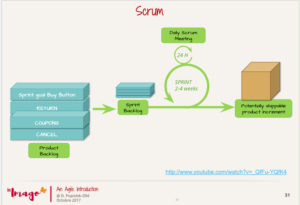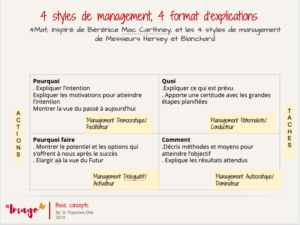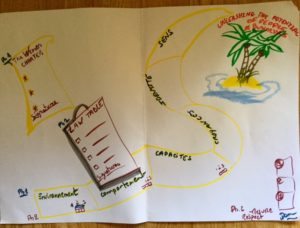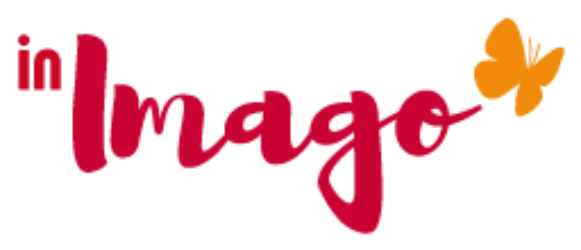Why Employees Like Scrum And Not Bosses!
The teams I coached regularly asked me when the mission was coming to an end to explain to them my approach, my feelings, my vision. In short, what represented my silence behind all these tools, behind my coaching, and my support in their approach to Do.
I will share with you, what I think I have understood from these 7 years of coaching teams at Autonomy as a Lean and Agile Coach. The first draft of this article dates from 2014. At this time again, Agile was little known and it was the teams that adopted Agility to find meaning in what they were doing.
Today, this article keeps its meaning because as soon as a team adopts the philosophy of the Agile Manifesto, it is not on its way back.
What has changed today is that Agility is on everyone’s lips and is requested by the Top Management, only interested in the increase in productivity. Productivity that an Agile team naturally gets when the team thinks in terms of value added delivery. Sometimes this demand is tinged with a need to increase the well-being in the company, RPS requires. But Agile is not who wants! The rigor required to adopt Agile principles and associated rituals, no longer have the order of pleasure when it has injunction to do!
When the organization imposes two models at the same time to the teams who did not ask anything: do as before and change, be agile! Paradoxical demands create immobility … and Agile teams, with a chaotic approach, not always reproducible, create anxety for the bosses… that’s why employees love Scrum and not the bosses!
What was not my surprise in 2011, when I started in a large industrial group my career Lean and Agile Coach, to see with what enthusiasm Millennials appropriated the principles Agile (drawing 1) and put them directly into action using SCRUM successfully (drawing 2).


Concepts so difficult in Lean to accept, such as visual management, the realization of actions in limited time, the delivery of added value were adopted from the first test by the teams.
Appropriation of know-how: sprint deliveries (limited time between 1 to 4 weeks); the added value delivered to each sprint was promoted by the base. The enthusiasm returned, the taste of the game and the innovation replaced gloominess and absenteeism. The promotion of Agile techniques, as well as my own coaching work, support to their implementation, was done by word of mouth.
Then the management jostled by the base, entered the dance and appropriated the concepts. Middle management regained its raison d’être by promoting the work done by the teams and sponsoring the method with Top Management.
Fact 1- – But then why do we have so much trouble to run Agile and Scrum on a large scale ?
Time constrained, task definition: great, our employees agreed to deliver more, faster and without compensation. And if we did Agile on a large scale.
And here, the ghosts of Taylorism and productivism came back en masse. The 12 Agile Principles were relegated to oblivion: The Face to Face was no longer possible (too expensive the collocation, the search for value too long and uncertain), make a product that works yes but all the specifications were not times (useless can be: but it was asked).
Teams to recall that the use of Scrum and Agile without autonomy, without team membership, in a rythmn imposed was like a pressure moved, see harassment. Zoouh: SWEEP SCRUM on a large scale when the rythmn is imposed and the autonomy is absent.
But why impose, why not accept the proposals that came from below? Why not implement the proposed innovations or action plans suggested by the teams?
Hypothesis 1-And if this rejection of Scrum was simply reduced to the acceptance of autonomy by Top Management?
Well, the empowerment, though put forward by our bosses in all the plans of CHANGE MANAGEMENT as one of the major and magical factors of the commitment of the Employees, is akin here to a seizure of power. The TRUST plastered on the walls of most of our large businesses melts like snow in the sun when it is necessary to let – the base do.
Entrusting the teams how to do it, ie all the end-to-end process allowing the realization and the control of the information by the direct contact with the Customer, puts back flat the classic organization of the company.
The manager is no longer the master of the flow of information and is not the only one knowing the means of production. The team is rehabilitated and brought to the fore.
If we cross the 4Mat, inspired by Bérénice Mac Carthney, and the 4 management styles of Messrs. Hersey and Blanchard, we can conclude that the blocking is therefore at the level of the delegation of how (How) – drawing 3.

The how in the management style is usually attributed to a directive manager or used to coach beginners in their positions. So if we openly asked the Management question about their style, very few of our bosses would claim this style, considered the most authoritative in terms of management.
Yet when the Scrum process is set up, giving control of how to the team, the management is jostled, seeks its bearings .
The team knows what it needs to do and takes responsibility by mastering how it does it. The manager seeks his place and his legitimacy. He then questions why and how?
And suddenly all decisions will crystallize around the how. The STATUS QUO is back.
Yet remember, your first steps as kids. What joy you had and how vehemently you opposed each time someone wanted to get you back into the stroller or take your hand. The tender parents had to let you take your first steps, anticipate your falls. They accompanied you. The Sense is there, the child gets up and walks alone. It is a universal law. Without debate. With Scrum it’s the same thing, trust is the foundation of everything. The path is not so important.
However, it is extremely difficult to agree on a way of doing things, because it often refers to the Ego of each and to the individual himself in his way of perceiving and implementing. It refers to a power struggle under sterile because the Meaning is often shared and legitimate for all.
To legitimize Scrum in bottom up, it is necessary to put back the confrontation of the ideas on the why (Meaning) and the what (deliverable allowing to give life to the meaning) and to give up the why. Only those engaged operationally in the action are legitimate to discuss it because it is the respect of the word given and therefore of the intrinsic values to the Team.
But in business it is not so simple to give up the how. We are in a world of adults, engaged in a codified system. For example, our entire promotion system is based on mastering the flow of information through our networks, focused on the tasks performed regardless of whether they still make sense in the changing context of our lives today.
The linear process aims at the good execution of the task in the right order, without innovation, without questioning. Most of the time what is also defined. There is no room for improvisation.
Suddenly, with Scrum, the paradigm changes. Here, the team decides how and in return for a short-term value delivery that facilitates the interactions between the individuals involved in this delivery, end-to-end. No worries about hierarchy or task to deliver in a pre defined order. Here it is a product that takes shape every time. It is a story that is written, where each one learns to appreciate the qualities of the other, and to do together without omnipresent hierarchy.
Teams love Scrum, to move the lines, to breathe, to finally master this how, vital. Teams love Scrum to get out of processes that stifle, hinder action and make each task disempowering. I sent it by email! It’s no longer me, it’s the other.
Today, we accept that the Internet beats all records of information transmission but (not yet!) The reflex of survival associated with that of adapting to its environment. Like the human body cell that adapts to viruses and offers ultra-responsive alert, fever, Scrum offers immediate action adapted and flexible to ideas still emerging. By interactive step, the exchanges and the solution are built in common.
Scrum, is one of the most used tools in Agile. In France, it is acclaimed by the teams who started the action. Just trying .. Managering It’s simple, on a small scale, just let yourself go. 1,2,3 … Go
Hypothesis 2- But then why do we have so much trouble launching Agile and Scrum on a large scale ?
After the first Scrum Team Achievements: Delivery on time, without reservation and with enthusiasm. comes the desire to TOTALLY standardize to scale and regain power Top down by dictating the method (how is the process to use: Scrum often forgetting the values associated with agility).
Imagine, the reaction of the employees when Scrum is taken over by the Bosses, emptied of the Why we do Scrum, made to be just a tool or a process. The bosses propose the tool to visualize the progress of the work every day and not to solve the problems that meet the teams daily. Awesome, Scrum proposes to increase productivity. The employees are then imposed the how (Scrum as a process), the what (to take back all the requests of the specifications without modifying the order or the organization), and the constrained time.
This Scrum, emptied of its meaning is worse than before, or quiet they could watch the river circulate in the valley and see spring from time to time major problems using their expertise. Here they must deliver, engage, without breathing.
If the bosses, do not accept that the employees master the how, this beautiful craze, as for the Lean, will lose its letters of nobility. It will remain in the hands of the experts one of the most beautiful tools of motivation to whom knows how to take ownership of it.
Hypothesis 3- Why this sudden craze for the Lean start-up ?
The Lean start-up as Scrum reminds that the first value of a company is to deliver what it is made for. Start-up leaders and even more those of the Millennials, helped by a high technology control by themselves the how. Passionate, they have a vision (Meaning). They clearly express what and to what. They show the way through the how. And it works. They share a passion and lead the first associates, the first employees. With this enthusiasm, they do (the how), quickly, test and launch without asking questions (drawing 3). They are the illustration par excellence of Savoir Faire, fast.
The leaders of Start up, without delegating, know how to do. They do it and it’s natural for them. They draw people to them because they control their vision and their passions. The first constraint of these Start-up bosses is to sell what they know how to do. It’s a question of survival. Survival in conventional businesses even as part of an integrated start-up are not directly managed by the employees in charge of the project.
The Lean start up recalls the necessary conditions for innovation and calls everyone to wake up. To be empowered. That’s why today, where everything is going fast, giving meaning (why), offering an identity (what) and mastering the how (how) and orienting towards (why do) are all major assets that hold the leaders Start-up (Drawing 3)
Fact 2- Yes, but what happens in a start-up when it is necessary to delegate the how, to engage around his vision and the identity.
After 3 months in a consulting firm, to create internally the foundations of a liberated company, or to promote a pragmatic agility in large groups, I reach the same conclusion as in this large industrial group of my early career as a coach Agile: it is absolutely not natural to let his teams do it, it blocks. It’s like giving a blank check. Every bottom-up attempt seems born to abort … Why?
As soon as the size of the start-up exceeds 10-12 people, the delegation becomes vital. Here, the challenge of how is the same as for large companies that want to develop Scrum on a large scale.
Maintaining the passion and vital drive needed for innovation means giving employees control over how.
This shock is probably stronger for the Start-up Leader, than in large companies, because the economic stakes are a fight between life and death.
Delegate the how for him to leave a blank check to employees without certainty of success.
Not letting them do is a hindrance too, because the passion is dulled. Relaying is not done and the Leader finds himself isolated. It reinforces the paternalistic or dictatorial side to advance, to advance its Teams.
Using Scrum and the Agile methods can then turn against him because the race against time is only the Start-up Leader. Employees live for the medium and long term, hoping for a short term strong enough to carry their wages and ambitions.
Hypothesis 4- Autonomy in business is learned
Each employee has his own personality and responds better when facing him, the answers to his questions are brought to him. In 4Mat drawing 3, everyone must identify themselves to feel good. Fair, personalized communication prevails over a speech or vision without meaning, without sharing.
Everyone claims to participate in the entire decision-making process of the company.
But now, we do not know how to do together, in trust, in complete freedom.
Faced with our world of process, Leaders and employees are often lost. The Agile, Collective Intelligence or Free Business models offer literatures, philosophy and accompanying tools.
But often, to succeed when it is necessary to radically challenge our way of life, it is not so simple to follow a model. With a magic wand, we would have to eliminate the organizational charts, question our learning, and COMMIT to do what we say. It’s not so obvious anymore.
It is also for the quadras, and more, a questioning of their own scheme of engagement in companies. Indeed, until now the model of recognition in the companies was built on a course in enterprise made of the dedication to the task, of authority, of a network based on the Faire -savoir. They sometimes bet on their career. To question the links of authority, the links of subordination requires a conversion effort very Strong from Top Management.
We must review the vital principles of companies by engaging in new organization, new contracts. Trust yes, but how?
I propose to you here, a small step approach which engages the teams on 43 days (drawing 4). The management must commit to free them the time of this implementation, which requires management to trust the teams (this is not lost time). Teams must train to reconnect with their natural creativity, to see differently to build without the help of the company’s linear process.

This principle is detailed in B.W.C: breathe we change and during our training in learning-by-doing.
It is also a reciprocal commitment to autonomy for both the employee and the company. That is why it is more important than ever to mark the path of this commitment to ensure that no one will stay on the spot.
Like Scrum, organized in an extremely structured way around roles and ceremonies, it is necessary to accompany each one in this approach step by step and to help the Manager to not get lost.
Confidence having been for some time disavowed, every step has become uncertain. It is important to measure the efforts and encourage them in a transparent way.
Here, I am only revisiting the principles of Robert Diltt, proposing the elaboration of a charter of autonomy and re-affirming, step by step, what we want to share and establish together (drawing 5).

It becomes urgent to rehabilitate the DOING in business. Our current model is running out of steam. Scrum, Agile is a great ramp of change that will allow the company to refocus on the Essential and Employees to smile again. Let’s not spoil the associated values and principles, let’s make them simply possible by re-empowering the power to do.
At Lean Kanban France 2015, we took Together the Challenge. Writting TOGETHER a book in 48 hours. A group of 30 people agreed to take up this challenge without consulting each other. All of them noted the importance of MEANING as a driver of personal engagement and offered you a set of practices to revisit the business world.
So why not you, Managers? 1,2, 3 … GO
This article was conceived and written by Dominique Popiolek, leader and professional coach
The End
